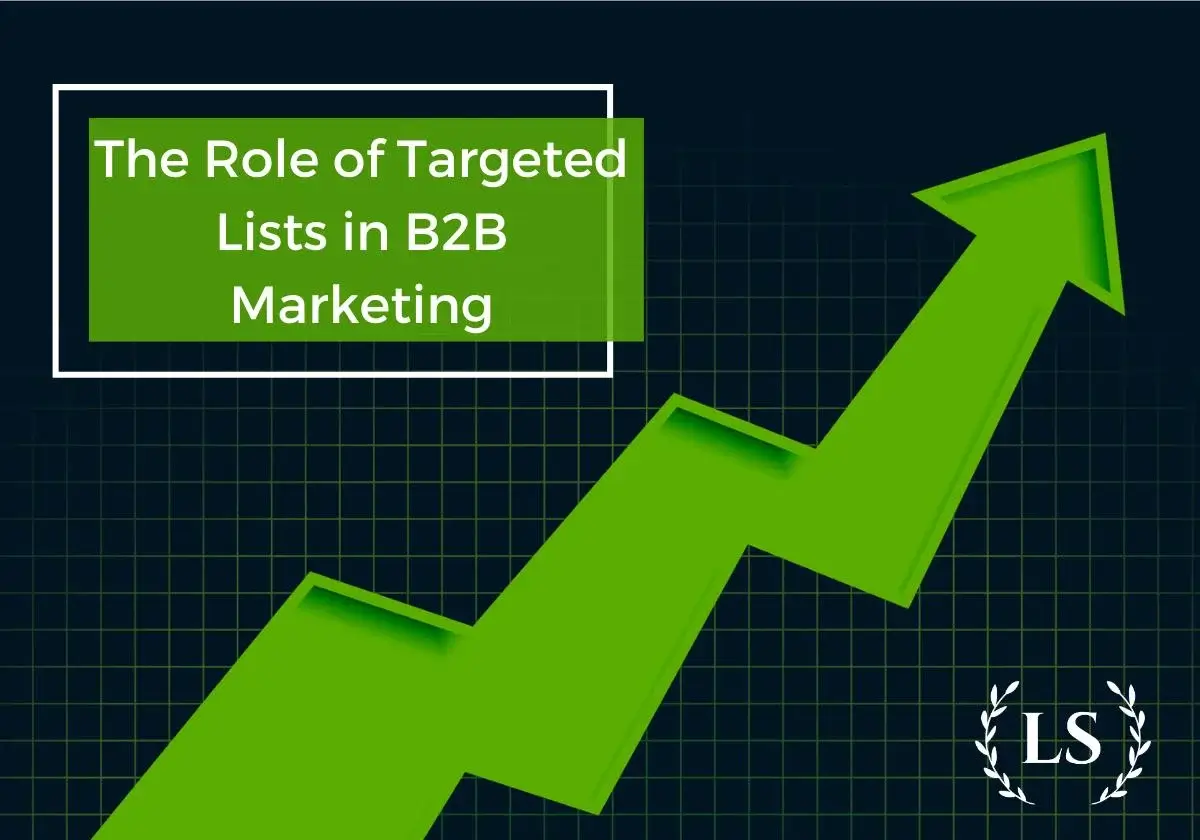The Role of Targeted Lists in B2B Marketing

In the world of B2B marketing, success hinges on your ability to connect with the right audience at the right time. The role of targeted lists in B2B marketing cannot be overstated. These lists serve as the linchpin to your marketing strategy, enabling you to reach prospects who are genuinely interested in your products or services. In this article, we will unveil the power of targeted lists and how they play a pivotal role in B2B marketing success.
The Significance of Targeted Lists in B2B Marketing
Before we delve into the strategies, let’s understand why targeted lists are crucial in B2B marketing:
– Relevance: Targeted lists ensure that your marketing efforts are relevant to the recipients, increasing the likelihood of engagement and conversion.
– Personalization: Personalized communication is key in B2B marketing. Targeted lists allow you to tailor your messaging to the specific needs and pain points of your audience.
– Efficiency: By concentrating on well-researched leads, you minimize resource waste, ensuring your efforts are focused on prospects with the potential to convert.
– Shorter Sales Cycles: High-quality leads are more informed and closer to making a purchase decision, shortening the sales cycle and accelerating revenue generation.
Now, let’s explore the strategies for leveraging targeted lists in B2B marketing:
1. Define Your Ideal Customer Profile (ICP)
Start by defining your Ideal Customer Profile (ICP). Identify the criteria that matter most to your business, such as industry, company size, location, job titles, and specific pain points. Your ICP serves as the foundation for building a targeted list.
2. Utilize Online Databases and Directories
Leverage online business databases and directories like LinkedIn, ZoomInfo, and industry-specific platforms to identify and collect contact information for prospects matching your ICP criteria. Advanced search filters can help you narrow down your list.
3. Content Gating
Create high-quality content assets, such as whitepapers, eBooks, or reports, and offer them as gated resources on your website. Encourage visitors to provide their contact details in exchange for access to these valuable resources.
4. Webinars and Events
Host webinars, virtual events, or workshops on topics relevant to your industry. Encourage attendees to register, providing their contact information for participation.
5. Email Subscription and Newsletter Sign-Ups
Promote email subscriptions and newsletter sign-ups on your website. Clearly communicate the value of subscribing and how it benefits potential leads.
6. Networking and Referrals
Leverage your existing network for referrals and introductions to potential leads. Personal connections can open doors to high-quality prospects.
7. Marketing Automation and CRM
Implement marketing automation and Customer Relationship Management (CRM) tools to manage and segment your targeted list effectively. Automation simplifies lead nurturing and engagement.
8. Data Enrichment and Validation
Regularly validate and enrich your targeted list using data enrichment tools. This ensures that the data remains accurate and up-to-date.
9. Privacy Compliance
Ensure that your list-building practices adhere to privacy regulations and data protection laws. Always obtain explicit consent for email communication.
10. Content Personalization
Tailor your content and messaging to the specific needs and pain points of your audience. Personalization increases engagement and conversion rates.
In conclusion, targeted lists are the driving force behind successful B2B marketing. By implementing these strategies, you can create a list of high-quality, engaged leads who are genuinely interested in your offerings. This, in turn, results in personalized communication, shorter sales cycles, and ultimately, a higher return on investment (ROI).







